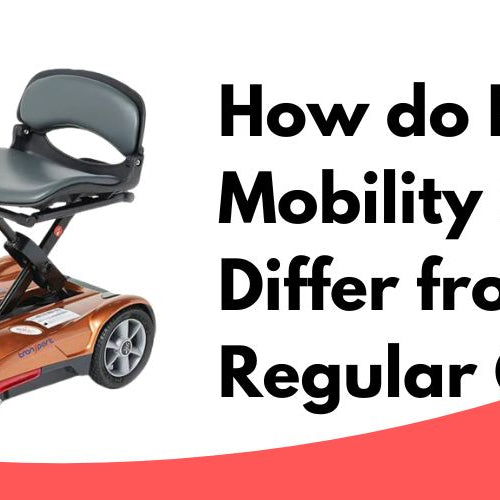Electric wheelchairs continue to grow in popularity and have become increasingly essential for many individuals, providing them with increased mobility and independence. The global electric wheelchair market has shown remarkable growth over the past few years, and this upward trend is forecasted to continue. As a vital means of facilitating movement for people with various physical disabilities and health conditions, it's crucial to understand the dynamics of electric wheelchair sales and the factors that drive this market.
In 2020, North America held the largest share of the electric wheelchair market, with a dominating 39% slice. Europe followed suit, capturing 27.1% of the market share. As of now, the electric wheelchair market is valued at around USD 2.89 billion and expected to reach approximately USD 5.27 billion, posting a Compound Annual Growth Rate (CAGR) of 10.76% during the forecast period. This astounding growth can be attributed to a number of factors, including an aging population, advancements in technology, and the increasing prevalence of various mobility-limiting conditions.
The demand for electric wheelchairs is further fueled by the need for improved healthcare and accessibility worldwide. With the number of wheelchair users predicted to increase annually, understanding the electric wheelchair market and its impact on consumers' choices becomes all the more relevant and crucial. As more and more individuals witness the life-changing benefits of electric wheelchairs, this market's growth is expected to remain strong for years to come.
Annual Sales of Electric Wheelchairs
Global Market
The global electric wheelchair market has experienced significant growth in recent years. In 2021, the market value reached approximately $3.66 billion and is projected to increase to $4.18 billion in 2022, with a compound annual growth rate (CAGR) of 14.1%. This substantial expansion can be attributed to factors such as:
- Advances in technology
- An aging global population
- Rising prevalence of mobility-related health conditions
By 2030, the global electric wheelchair market is expected to reach $6,845.2 million, representing a CAGR of 8.4% during the forecast period.
Regional Sales
North America: In 2020, North America held the largest share of the electric wheelchair market, with a market value of over $2.3 billion. The region's dominance in the market can be credited to a range of factors, including:
- High healthcare expenditure
- Increasing awareness of electric wheelchairs' benefits
- Surging demand for independent mobility solutions
Europe: Europe held the second-largest market share in 2020, with a 27.1% share. The growth in Europe's electric wheelchair market can be linked to:
- Well-established healthcare infrastructure
- Accessibility initiatives promoting the use of electric wheelchairs and public funding for their acquisition
Asia Pacific: The Asia Pacific region is anticipated to experience the fastest growth rate in the electric wheelchair market during the forecast period. Some driving elements in the Asia Pacific market include:
- Rapid urbanization
- Expanding elderly population
- Developing healthcare infrastructure
To summarize, the electric wheelchair market is witnessing a sizable growth in annual sales both globally and across various regions. North America leads the market share, followed by Europe and Asia Pacific. The increase in electric wheelchair sales can be linked to factors such as advances in technology, an aging global population, and rising demand for independent mobility solutions.
Market Overview
The electric wheelchair market has been witnessing significant growth in recent years. This growth can be attributed to factors such as advancements in technology, increasing elderly population, and rising demand for mobility assistance devices.
Market Share
The global electric wheelchair market is segmented into various regions, with North America holding the largest market share, followed by Europe and Asia-Pacific. The dominance of North America can be attributed to their advanced healthcare infrastructure, high disposable income, and the presence of major manufacturers in the region. The Asia-Pacific region is anticipated to display the highest growth rate in the coming years, primarily due to the increasing elderly population and rising awareness of electric wheelchairs as a convenient mobility solution.
Key Players
The market comprises a number of key players, including Invacare Corporation, Pride Mobility Products Corporation, Sunrise Medical, Permobil, and LEVO AG. These companies compete on various fronts, such as product innovation, pricing, and geographic expansion. In order to maintain their market position, these key players are constantly investing in research and development efforts, as well as engaging in strategic mergers and acquisitions.
In conclusion, the electric wheelchair market is continually evolving, with new advancements and technologies emerging regularly. As the demand for such mobility solutions increases, competition among key players will remain fierce, ultimately benefiting consumers with a wider range of products to choose from.
Factors Influencing Sales
Steady Growth
Electric wheelchair sales have seen a steady growth over the years. This steady growth can be attributed to several factors, such as an aging population, increased awareness about mobility solutions for people with disabilities, and the availability of various wheelchair models to cater to different needs. As the demographic of users widens, the demand for electric wheelchairs continues to rise, thereby positively influencing sales figures.
Furthermore, the global electric wheelchair market has been widely embraced, owing to government initiatives and support for accessibility of mobility solutions. This has also played a crucial role in driving the growth of electric wheelchair sales annually.
Technological Advancements
Technological advancements have significantly impacted the sales of electric wheelchairs. Enhanced features, such as better battery life, improved control systems, and compact designs, have increased the appeal of these mobility devices to users. As technology continues to advance, electric wheelchairs become more user-friendly and efficient, further driving their demand and sales.
In addition, advancements in materials and manufacturing processes have led to the production of lightweight and durable electric wheelchairs. These improvements contribute to a better user experience, ultimately resulting in increased sales.
As electric wheelchair technology continues to evolve, users can expect even better features and more sophisticated models in the coming years, which may further drive the growth of this market segment.
Emerging Trends
Smart Wheelchairs
The market for electric wheelchairs has seen a significant shift in recent years. One of the most notable emerging trends is the development of smart wheelchairs. These advanced mobility aids are equipped with cutting-edge technology, enabling users to navigate their surroundings with greater ease and independence. Some prominent features of smart wheelchairs include obstacle detection, GPS navigation, and smartphone connectivity. These innovations offer users an enhanced level of control and autonomy, allowing them to tackle a wider range of everyday tasks with confidence.
Lightweight Models
Another crucial trend in the electric wheelchair market is the introduction of lightweight models. Mobility equipment manufacturers are increasingly focusing on creating compact and maneuverable wheelchairs to meet the diverse needs of their users. These models are designed with lighter materials and streamlined structures, resulting in reduced weight without compromising strength or durability. Not only is this beneficial for users who may struggle with heavier wheelchairs, but it also facilitates easier transportation and storage. A few key attributes of lightweight electric wheelchairs include:
-
Portability: Lightweight wheelchairs are typically easier to transport, making them ideal for users who frequently travel or require a wheelchair that can easily be moved between locations.
-
Maneuverability: The reduced weight of these models allows for increased agility, enabling users to navigate tight spaces and crowded areas more effectively.
-
Energy Efficiency: Lighter wheelchairs generally require less battery power to operate, leading to longer battery life and reduced charging time.
These emerging trends in the electric wheelchair market demonstrate the industry's focus on enhanced functionality, user-friendliness, and versatility. By developing innovative solutions that cater to the unique needs of individuals with mobility challenges, manufacturers are working towards creating a more inclusive and accessible world.






Leave a comment